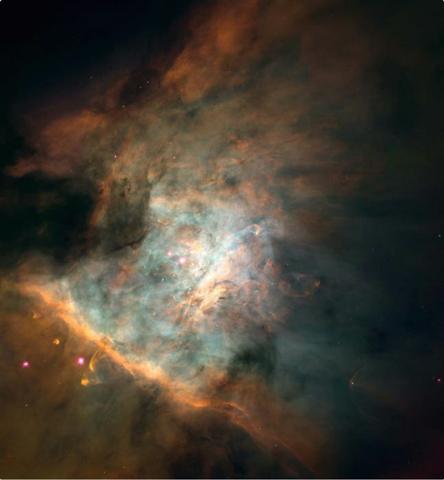|
|
Hst Orion Nebula
|
In 1715, Edmund Halley published a list of six nebulae. This number steadily increased during the century, with Jean-Philippe de Cheseaux compiling a list of 20 (including eight not previously known) in 1746. From 1751–53, Nicolas Louis de Lacaille cataloged 42 nebulae from the Cape of Good Hope, with most of them being previously unknown. Charles Messier then compiled a catalog of 103 nebulae by 1781, although his primary goal in doing so was to avoid the false detection of comets.
The number of nebulae was then greatly expanded by the efforts of William Herschel and his sister Caroline Herschel. Their Catalogue of One Thousand New Nebulae and Clusters of Stars was published in 1786. A second catalog of a thousand was published in 1789 and the third and final catalog of 510 appeared in 1802. During much of their work, William Herschel believed that these nebulae were merely unresolved clusters of stars. In 1790, however, he discovered a star surrounded by nebulosity and concluded that this was a true nebulosity, rather than a more distant cluster.
Beginning in 1864, William Huggins examined the spectra of about 70 nebulae. He found that roughly a third of them had the absorption spectra of a gas. The rest showed a continuous spectrum and thus were thought to consist of a mass of stars. A third category was added in 1912 when Vesto Slipher showed that the spectrum of the nebula that surrounded the star Merope matched the spectra of the Pleiades open cluster. Thus the nebula radiates by reflected star light.
Slipher and Edwin Hubble continued to collect the spectra from many diffuse nebulae, finding 29 that showed emission spectra and 33 had the continuous spectra of star light. In 1922, Hubble announced that nearly all nebulae are associated with stars, and their illumination comes from star light. He also discovered that the emission spectrum nebulae are nearly always associated with stars having spectral classifications of B1 or hotter (including all O-type main sequence stars), while nebulae with continuous spectra appear with cooler stars. Both Hubble and Henry Norris Russell concluded that the nebulae surrounding the hotter stars are transformed in some manner.
|
|









